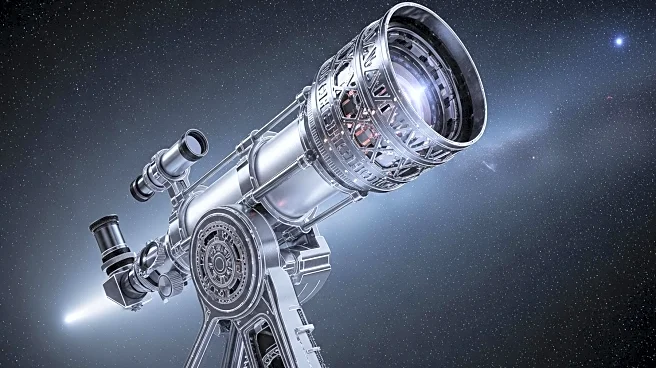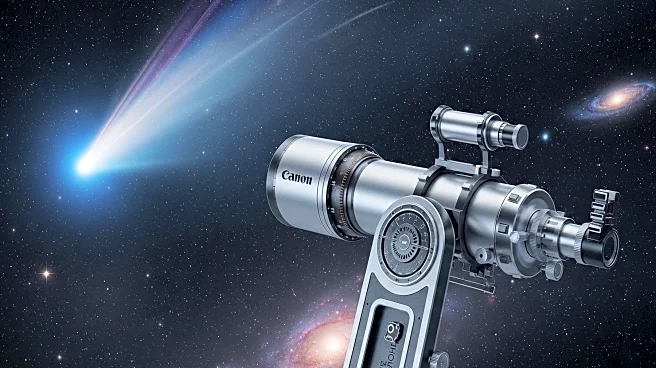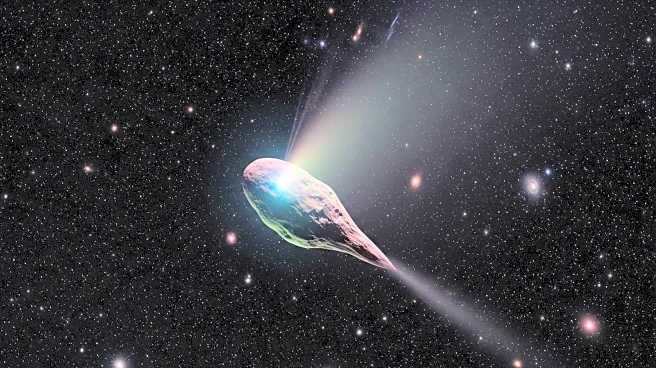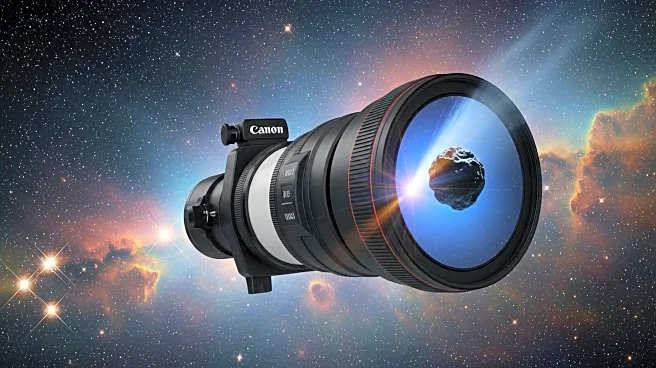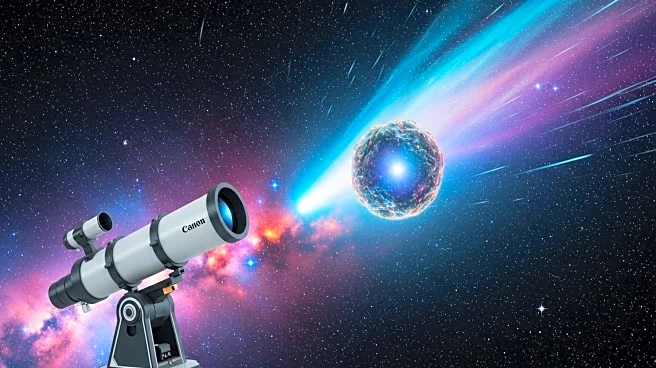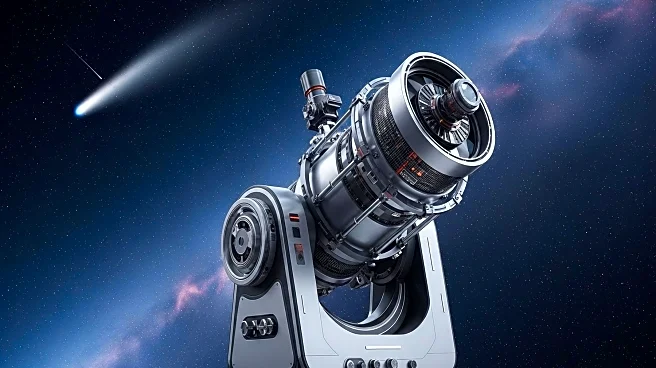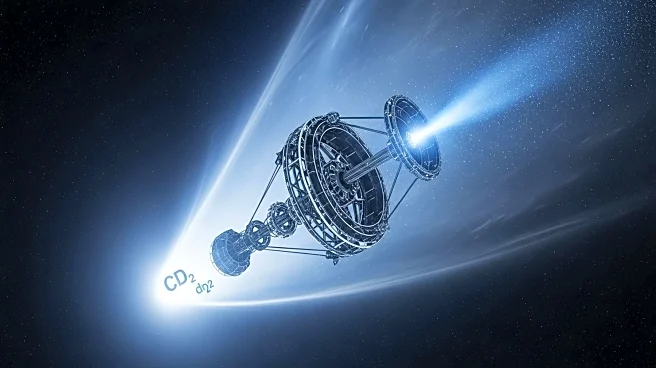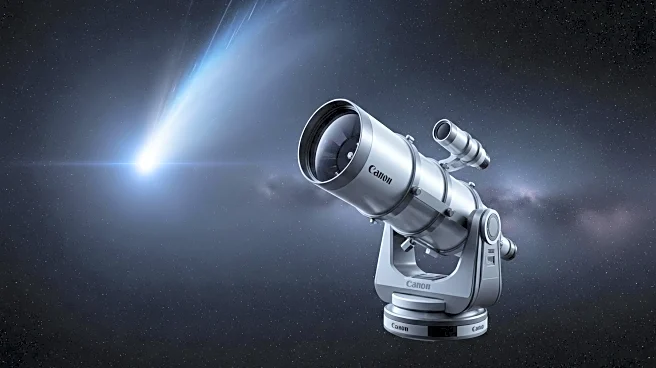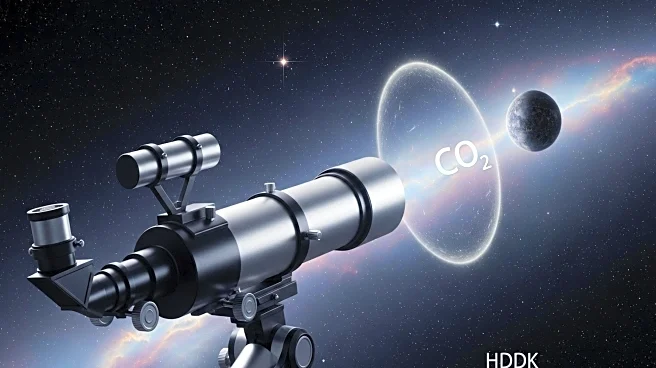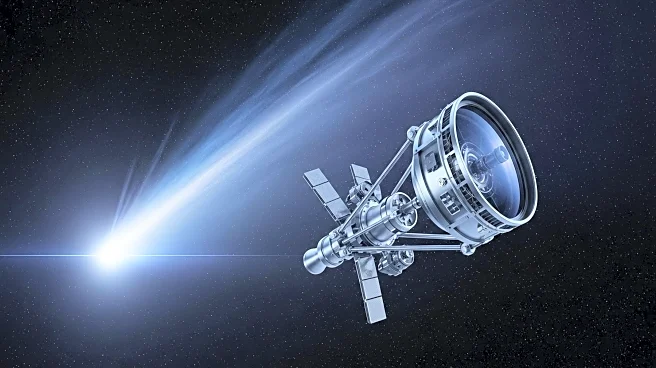What is the story about?
What's Happening?
NASA's James Webb Space Telescope has observed the interstellar comet 3I/ATLAS, revealing a unique composition dominated by carbon dioxide. This comet, only the third of its kind discovered, originated outside the solar system and has been studied using the Near-Infrared Spectrograph (NIRSpec) instrument. As 3I/ATLAS approaches the Sun, its icy core undergoes outgassing, releasing a mix of gases including carbon dioxide, water, and carbon monoxide. The comet's carbon dioxide-to-water ratio is notably high, suggesting it may have formed near the CO2 ice line in its parent protoplanetary disk or been exposed to high radiation levels over time.
Why It's Important?
The discovery of 3I/ATLAS provides valuable insights into the formation and composition of interstellar comets, which differ significantly from those originating within our solar system. Understanding these differences can enhance knowledge of cosmic processes and the conditions in distant star systems. The high carbon dioxide content suggests unique formation conditions, potentially offering clues about the environments in which such comets develop. This research could impact future studies on cometary science and the broader understanding of interstellar objects.
What's Next?
Further analysis of 3I/ATLAS is expected to continue as it moves closer to the Sun, allowing scientists to gather more data on its composition and behavior. Researchers may focus on understanding the implications of its high carbon dioxide levels and the potential presence of a reflective crust. These findings could lead to new theories about comet formation in different star systems and influence future missions targeting interstellar objects.
Beyond the Headlines
The study of 3I/ATLAS may prompt discussions on the ethical and scientific implications of exploring interstellar objects. As technology advances, the ability to study such distant phenomena raises questions about the prioritization of resources and the potential for discovering life-supporting conditions beyond our solar system.
AI Generated Content
Do you find this article useful?
